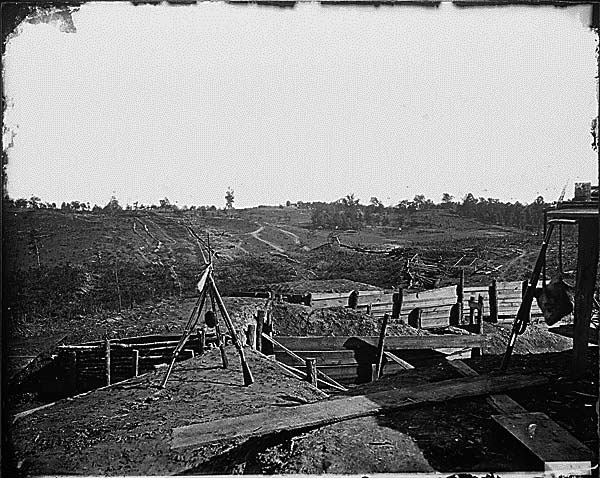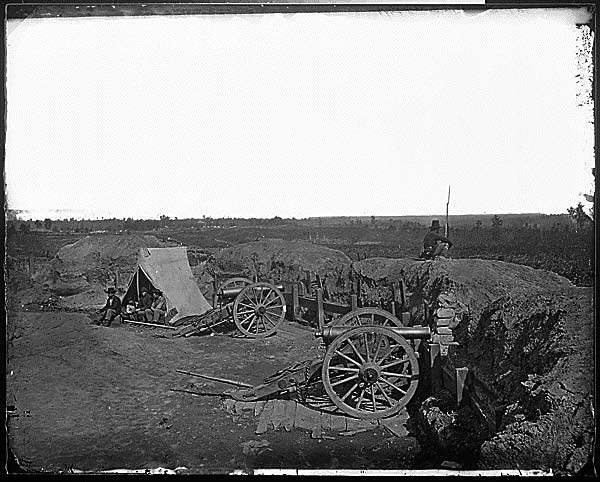
The Atlanta Campaign of 1864: The Camera at War
Today it is hard to imagine two massive armies maneuvering and clashing in the area that is now Atlanta: one army attempting to force its will upon the future metropolis and the other doing everything in its power to resist that will. Under the command of General William T. Sherman, a large Federal force moved out of Chattanooga, Tennessee towards the Georgia capital. The smaller Confederate army led by General Joseph E. Johnston and later John B. Hood had the job of stopping this Federal onslaught. From May 7 until September 2, when Sherman’s troops moved into Atlanta, these armies collided and parried throughout Northwest Georgia. For the most part, the Confederates dug in while the Federals either attacked head-on or flanked around the battlements forcing the besieged force to withdraw, regroup, and dig in. At times, the reverse occurred.
The impact of the fall of Atlanta was instrumental in the eventual victory for the Federal forces. It boosted morale in the North and insured the reelection of President Abraham Lincoln which meant that the war would continue to the South’s capitulation. Until then, with no major Confederate Army left to contest Sherman and his men, he would order them to move east, towards Savannah, and from there, north into the Carolinas. Unopposed, Sherman’s Army brought the war to the heart of the South and to its civilian population, making both Georgia and South Carolina "howl."
Many of the photographs below are the work of George Barnard. Once an employee of Matthew Brady Studios, Barnard worked for the Topographical Branch of the Army Engineers after December 1863. Assigned to Sherman’s Army, he captured many of the images of the Atlanta Campaign on early photographic equipment. The remaining photographs are attributed to the Matthew Brady Studios but were likely not taken by Brady but one of his employees. Notice the detail in the images: rifle stacks, railroad trestles, entrenchments, the ravages of war.
Documents
Suggested Activities:
These images might make a good, but simple research project. Have students access descriptions of the Atlanta Campaign either on-line or with a print source and then have them place the images in the chronological sequence they represent. For example, which images represent battles in the early part of the campaign or which images took part at the end of the campaign?
There are more online images taken during the Atlanta Campaign available from the National Archives
Civil War Atlanta
Civil War Allatoona
Civil War Resaca
Civil War Peach Tree
Civil War New Hope Church
An online copy of Civil War photographer George Barnard's 1866 publication Barnard's Photographic Views of the Sherman Campaign, can be found online at the Digital Library of Georgia http://dlg.galileo.usg.edu/hargrett/barnard/ .















